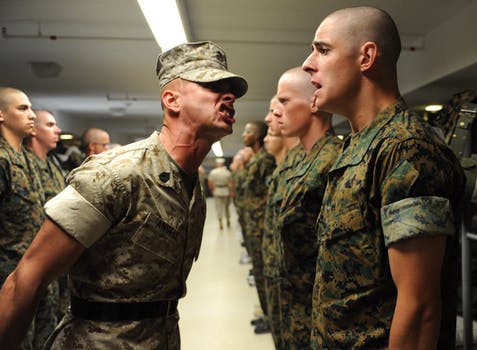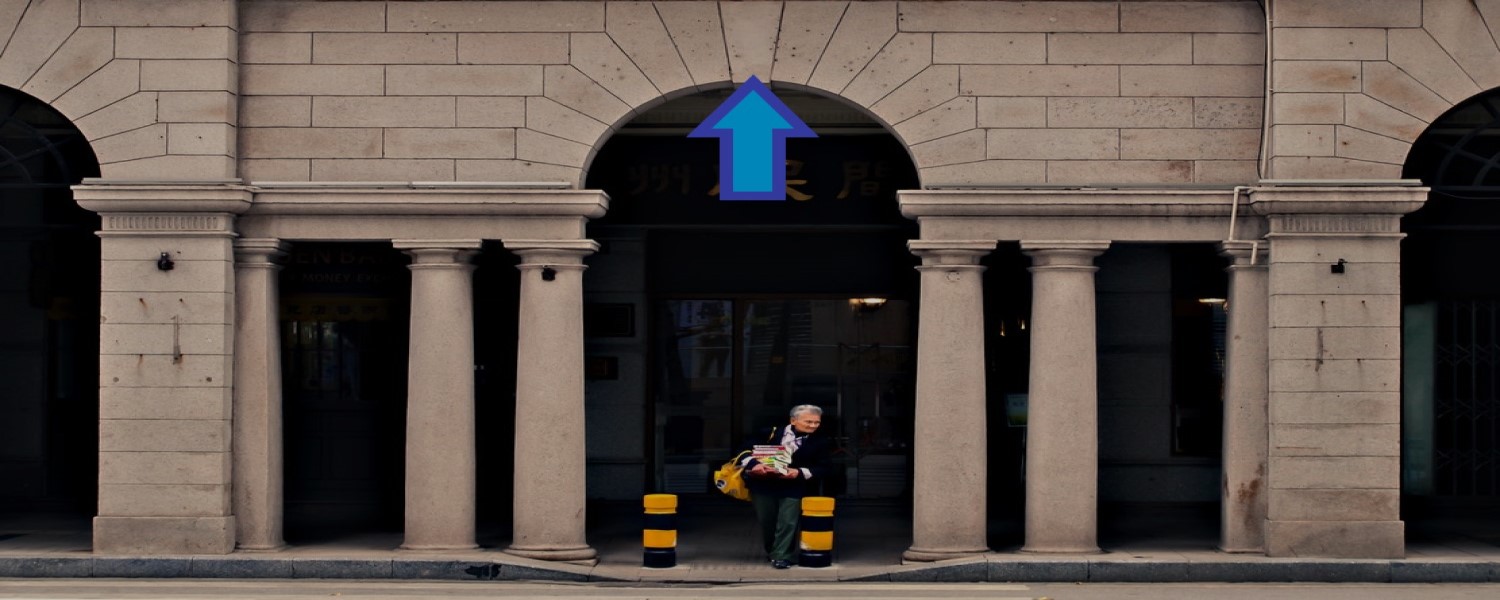This is How to Start a Chain Reaction with Keystone Habits
There is one specific activity that sailors who are participating in Navy SEAL training do at the start of every day that demonstrates discipline and attention to detail amongst other things. And not only do they perform this activity, but they are also evaluated on it and if they do not do it correctly, they are ordered to ‘hit the surf’ and then roll in the sand until they become a ‘sugar cookie’. While this activity demonstrates discipline and attention to detail, it is also an example of what is known as a keystone habit. While I will wait until the end of this blog post to disclose the activity the SEALS engage in, I will explain the concept of keystone habits now.
Until then, see if you can figure out the activity the SEALS engage in!

What are Keystone Habits?
Recently I have written blog posts on how to create habits and how to break habits. Now it is time to discuss types of habits called keystone habits, which are powerful singular habits that have the ability to affect the success of other habits. You can think of keystone habits as ones that help you acquire multiple good habits for the price of one good habit. According to Charles Duhigg in The Power of Habit, “The habits that matter most are the ones that, when they start to shift, dislodge and remake other patterns.” 1 – which is exactly what keystone habits do.

Not all habits are created equal and by identifying these keystone habits, you can influence how you live and start a chain reaction that can completely transform your life.
Before we get to how to create keystone habits, let’s explore a couple quick stories that Duhigg tells in his book to demonstrate the power of keystone habits.
The First Story…
Was about Paul O’Neill, the former CEO of Alcoa who when he took over was presiding over a company who had been going downhill quickly! Instead of focusing on profits and losses, O’Neill made it clear that the number one priority everyone would focus on now that he was CEO was safety, and in particular reducing on the job injuries to zero. In this case, changing everyone’s safety habits was the keystone habit which would require everyone coming together and changing how they worked and communicated.

Alcoa studied and improved the processes that caused the injuries. This not only reduced the number of injuries, but it also made Alcoa the best, most streamlined aluminum company in the world. By focusing on safety, old rigid processes changed which started to build new corporate habits and resulted in costs going down and quality going up. By focusing on the keystone habit of safety, Alcoa not only became one of the safest companies in the U.S., but its profits also hit a record high and when O’Neill retired the net profit was five times what it was when he began!
The Second Story…
That Duhigg shared was that of Michael Phelps – the most decorated swimmer in Olympic history. His longtime coach Bob Bowman realized that by having Phelps engage in the keystone habit of visualizing himself swimming it helped create the right mindset to enable other habits such as diet, stretching, sleep, and practice schedule to fall into place on their own. As Bowman said, “Eventually we figured out it was best to concentrate on these tiny moments of success and build them into mental triggers. We worked them into a routine, there’s a series of things we do before every race that are designed to give Michael a sense of building victory – his habits have taken over.” 1

Now that we understand what keystone habits are, let’s look at
How to Create Keystone Habits
In the stories I shared above, each of the keystone habits that were created shared three important characteristics:
(1) Small victories:
Achieving small victories sets the stage for more small victories to occur, and they help build your confidence and convince you that bigger victories are possible. The small wins that Phelps got throughout the day built on each other, with the race being just another step in the pattern. And at Alcoa, O’Neill’s open communication policy on safety issues created a culture that caused people to come up with other great ideas.
(2) They seed other habits:
Keystone habits also create platforms for which other new habits can emerge. For example, by having Phelps visualize himself swimming every night, by the time he got to the race he had done it so many times in his head already that it became effortless. It also helped create a new habit of being calm and performing during his races almost effortlessly.
(3) They make excellence contagious:
Lastly, keystone habits help us change our sense of self and what is possible. Another example is when Phelps swim goggles malfunctioned during a race making it impossible for him to see. However, the keystone habits that he had established had created a confidence in his mind that he would succeed no matter what. The keystone habit of visualization had, in essence, helped him swim blind and oh by the way…set a world record!
In the case of Phelps, the keystone habit created by Bowman came from a bunch of trials and errors.. In terms of you creating your own keystone habits, it may take a bit of trial and error, but if you can incorporate the 3 characteristics of keystone habits you are well on your way.
Examples of Keystone Habits
Again, everyone is different, and you will need to find keystone habits that work for you and that have the 3 characteristics above.
Some popular examples of keystone habits are:
Exercise: is a textbook example of a keystone habit as it has been shown to motivate people to eat better, smoke less, have increased productivity at work, have better relationships, feel less stressed, use credit cards less and on and on.
Families eating together: have been shown to raise children who achieve better grades, have better emotional control, possess better homework skills and more confidence.
Meditating: gives you numerous mental benefits, calms you down and gets you in a great mood.
Cold showers: this is one of my personal keystone habits that I do first thing in the morning. It gives me energy, gets me in a better mood and gives me a small win for the day.
Getting Up Early: gives you a head start on the day and helps you accomplish more tasks while others are sleeping so you don’t get disturbed, which gives you early victories to start the day off right. That is unless you are a night owl!
Journaling: helps get rid of mind clutter, plan your day, and practice gratitude which leaves you feeling great and leads to other great habits.
Tracking what you eat: Duhigg cited another study regarding the keystone habit of those who tracked what they ate lost twice as much weight as those who didn’t. The habit of tracking what they ate seeded another habit – analyzing their food log which led to improved eating habits and weight loss.
Back to the Navy SEALS…
And the keystone habit they engaged in every morning. If you guessed going for long swims or long runs, you are incorrect! However, if you guessed ‘making their bed’ you are correct! In his NY Times bestselling book, Make Your Bed, William H. McRaven explained that the first thing they did after ‘rolling out of the rack’ was to make their bed. It was their first task of the day, they were inspected on it and it gave them a ‘small victory’ to start their day. And as McRaven explained, even when he was in sickbay, the salty old doctor always made them make their bed there as well because as the doc said, “If the beds were not made and the room was not clean, how could the sailors expect the best medical care?”

Until next time, keep identifying and practicing those keystone habits, make your damn bed and as always…PYMFP!
–Rick
Use It or Lose It:
To create keystone habits, make sure they have the following 3 characteristics:
 Help you achieve small victories
Help you achieve small victories
 Seed other habits
Seed other habits
 Make excellence contagious
Make excellence contagious
When to Use It:
When you want to create a habit that will lead to other good habits that will help transform your life.
What Do You Think?
Do you have any keystone habits that you engage in? Please share in the comments below.
If you enjoyed this post, it would mean the world to us if you shared it with people you care about via any of the social media platforms below!
Popular Previous Posts:
This is How to Make Small Talk Like a Pro!
How to Introduce People with a Conversation Insurance Policy
Why You Need to Stop Monkeying Around and Do a Life Audit!
How to Make Decisions: Heads Carolina, Tails California!
How to Be the Most Interesting Person in the World!
References
1 Duhigg, Charles. (2012) The Power of Habit: Why We Do What We Do in Life and Business New York: Random House.
2 McRaven, William. H (2017) Make Your Bed, Grand Central Publishing

Aha! I guessed bed making immediately. A while back I read an article on the net about a high ranking navy officer who believed the reason for his success was making up his bed first thing in the morning. Said it gave him the chance to think about that day’s activities and what he needed to focus on.
Incidentally, who is Bowman? Other than that, an entertaining and educational essay.
Hi Dave, Nice guess!! Good catch and my bad, it was his longtime coach Bob Bowman, thanks for letting me know, just made the edit. Be good! Rick